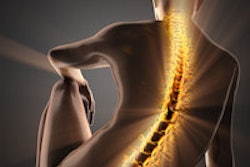Dear Digital X-Ray Insider,
Full-spine radiography is still the gold standard for identifying and monitoring scoliosis, or lateral curvature of the spine. Furthermore, scoliosis patients typically receive multiple radiographs during treatment and follow-up, so new research from Belgium about finding the optimal protocol in these patients is bound to generate considerable attention.
A team of researchers from Brussels shared their experiences at this month's ECR 2016 in Vienna. To get their findings, click here.
Often the exhibition halls at ECR are a great place to learn about the latest advances in digital x-ray, and that was certainly the case this year. For a product roundup and a collection of sample images obtained from the state-of-the-art equipment on display, click here.
The number of interventional procedures using guidance by x-ray and other imaging modalities continues to grow across Europe, and this has significant dose implications for patients and staff. Researchers from Manchester, U.K., have scrutinized this topic. Click here for the full story.
The use of radiography can lead to a better understanding of contemporary or old objects and demonstrates the interest in introducing forensic techniques in ethnology and archeology. If you missed last month's intriguing article about how x-ray is unveiling the secrets of Haitian voodoo dolls, make sure you catch up by clicking here.
Alleged missed, delayed, or incorrect diagnosis of tumors accounted for nearly 30% of settled litigation claims over a 20-year period, according to new figures from the U.K. Chest x-rays accounted for more than a quarter of these cases. Get the details here.
For a full list of stories, see below or go to the Digital X-Ray Community. Also, make sure you check back regularly to see our latest coverage.



















